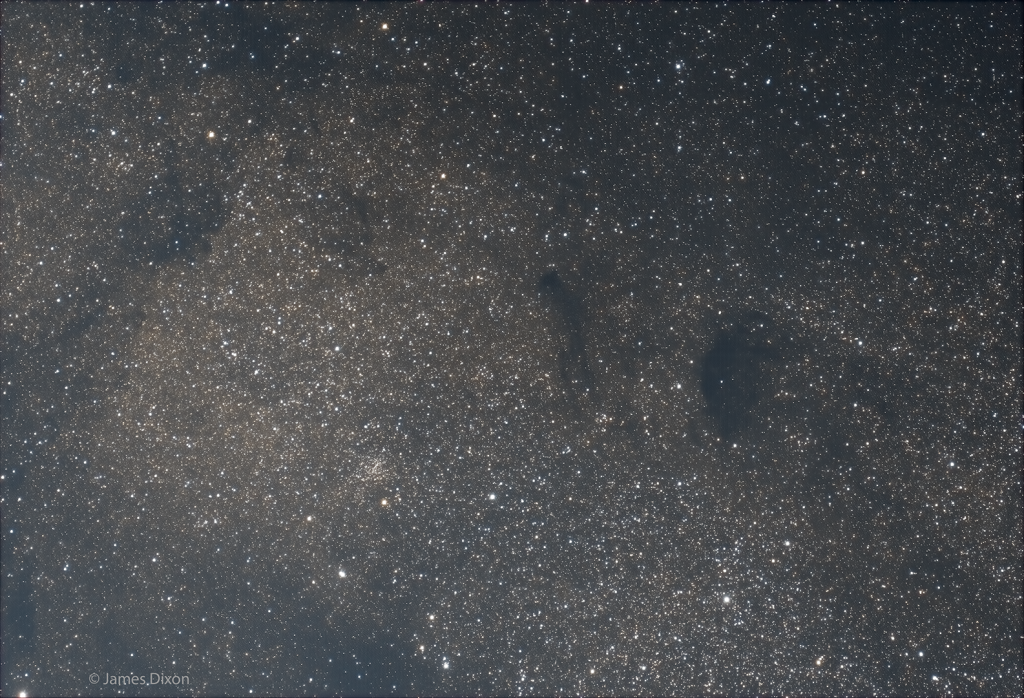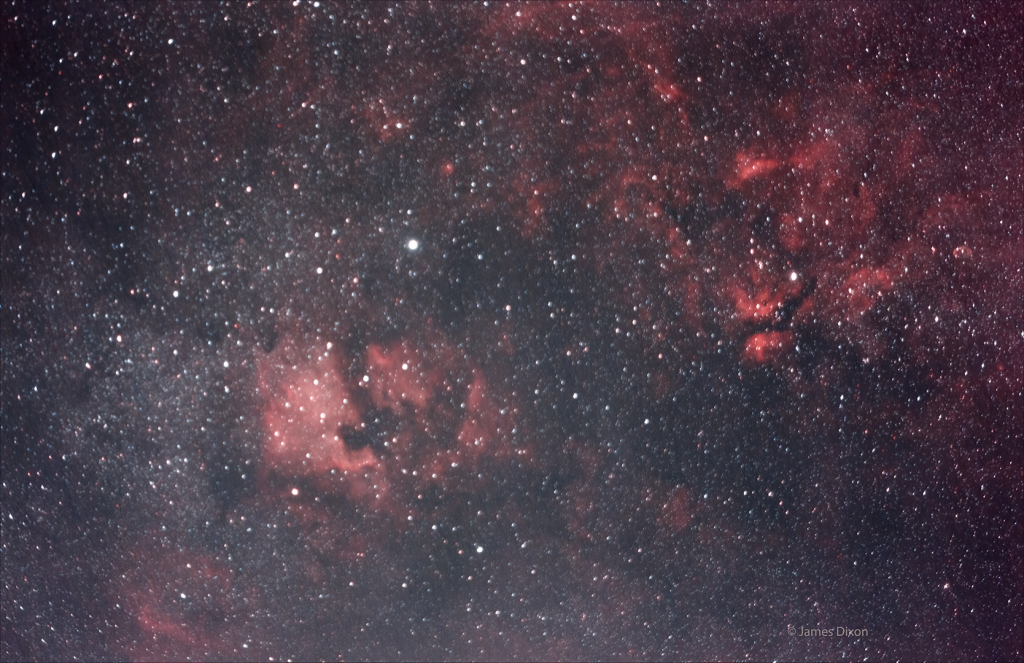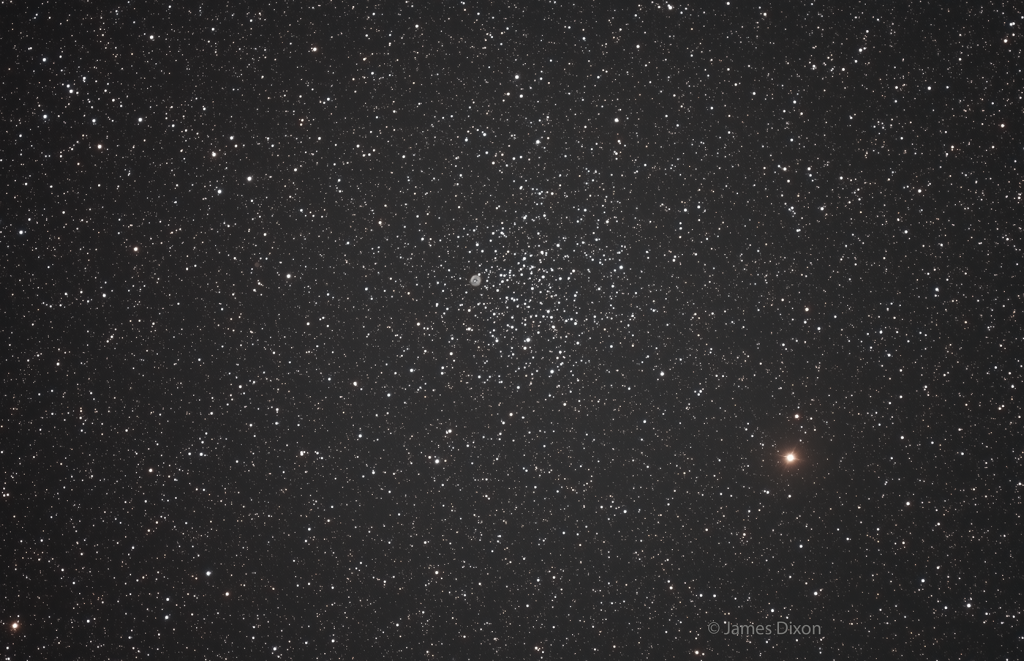
Saturday night at the River Ridge Observatory, while my DSLR was busy with Cygnus nebulae, my 11″ SCT was busy looking at dark nebulae. Here are some in the Small Sagittarius Star Cloud which is about 16,000 light years away. The star cloud itself is too large for this setup so we only see about half of it. This is a star cloud but you can see patches where there aren’t so many. Those areas have dark nebula that blocks the stars behind them. The one nearest the center is Barnard 92 (B92) and the one to the right of it is Barnard 93. Using my imagination, B92 looks like a man with long skinny legs facing mostly away from us while B93 looks like a turtle standing on his back legs maybe holding something in his front legs.


